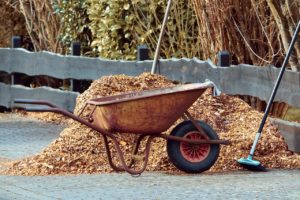 By Anita Maddox, Fort Bend County Master Gardener
By Anita Maddox, Fort Bend County Master Gardener
Did you know the best time to water your landscape is early in the morning before 10 a.m. (best), or late in the evening after 6 p.m.? If you water during the heat of the day, some of your water is lost to evaporation.
There are a number of helpful guidelines about how to water your landscape to keep it healthy and beautiful.
- How do you know how much water you added to your landscape? All you do is set a few cans around your lawn, like empty tuna cans, and measure the water in the cans after irrigating. You can also measure rainwater by using a rain gauge since rainwater can be counted in the weekly amount of water applied to the landscape.
- How much to water. During the summer months, apply only one (1) inch of water on your lawn every seven (7) days. By doing this your grass and plants will develop deeper roots and be healthier. During the winter months you can reduce your watering to once every 15 to 20 days.
- Use the “cycle-and-soak” method. The Fort Bend area generally has clay soil so water does not filter down into the soil as quickly as in sandy soil. If you program your irrigation system to split runtimes into several shorter cycles, the water will get down into the roots where it’s really needed for healthier grass and plants. This is also a useful method for landscapes with steep slopes where water tends to run off. Most irrigation controllers can be easily programmed for this type of water cycling, and some controllers are already equipped to perform this special function.
- Too much water! Did you know that too much water can hurt your landscape? Overwatering not only wastes water, it’s not healthy for landscape plants. Your lawn might recover from too much watering, but your trees, shrubs and perennials may be killed. And too much water can promote disease.

- Mulching. Use mulch in your garden beds to reduce evaporation of soil moisture. Mulch will also lower soil temperatures around plant roots, prevent erosion and reduce weed growth. As a bonus, if you use organic mulch, it will slowly break down and enrich the soil.
- Keep soil healthy. If you keep your soil healthy, the water you provide to your landscape can be absorbed more easily. If the soil is too compacted, the grass and plant roots won’t get enough oxygen and will suffer. Aerating the soil is one method of reducing soil compaction, and another is adding one-half inch of compost each year in the winter on top of your lawn and garden beds.
- Lawn mowing. Mowing lawns at the correct height also helps conserve water and keep your grass healthy. In general, adjust the mower blades to a height of about 3 inches for St. Augustine grass (even higher during a drought), and about 2 inches for Bermuda grass. Avoid mowing more that 30% of grass height at one time.
- Aim your sprinkler heads. Adjust your sprinkler heads to water the landscape and not the pavement so as not to waste water or money.
For more detailed information visit: aggie-horticulture.tamu.edu/earthkind/